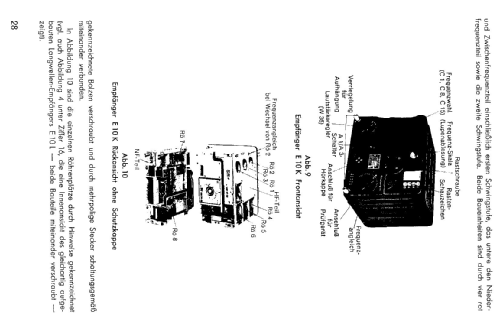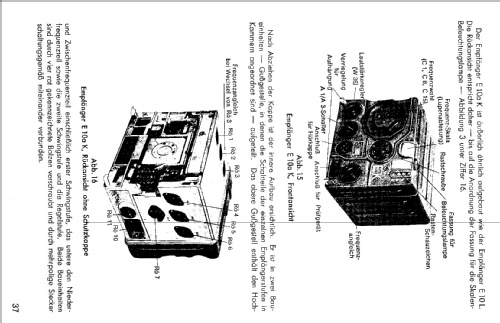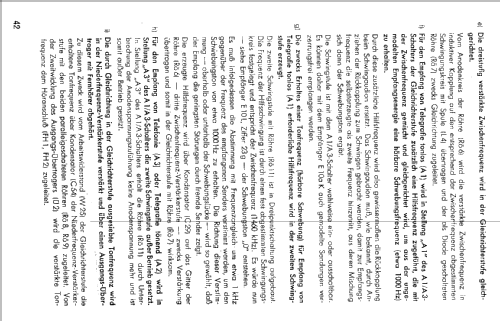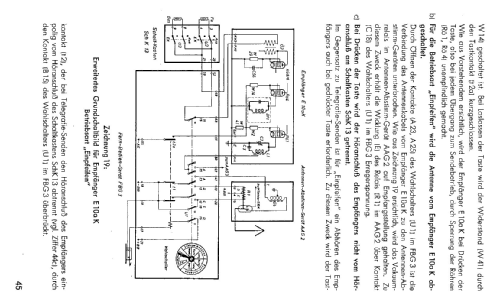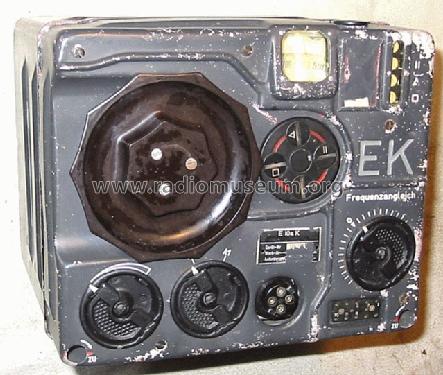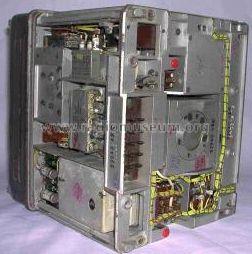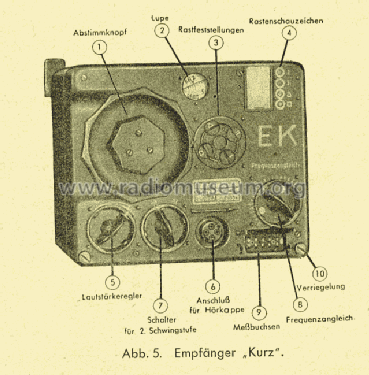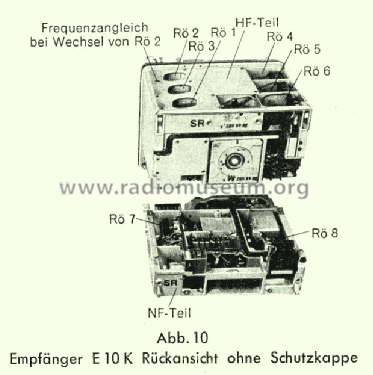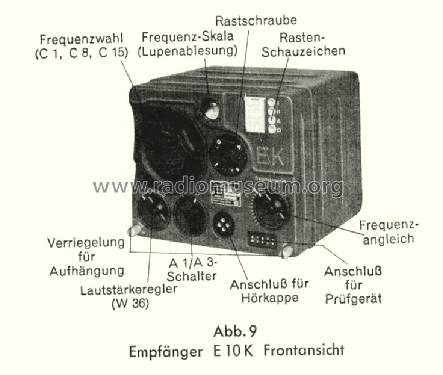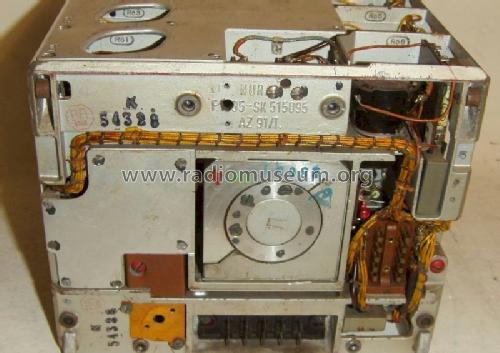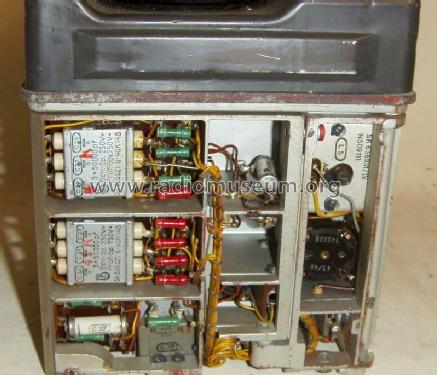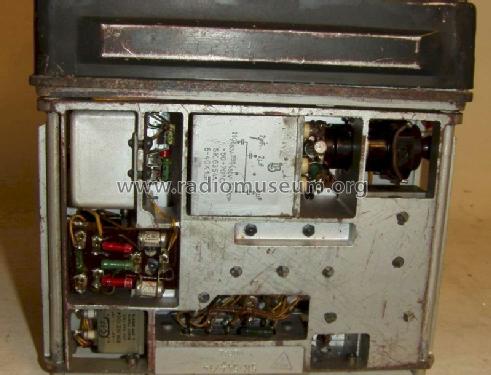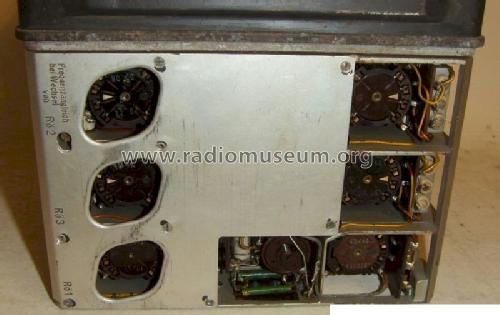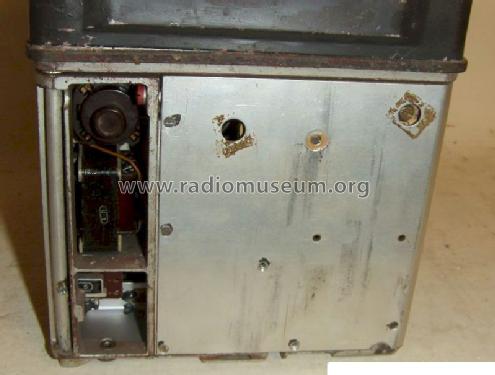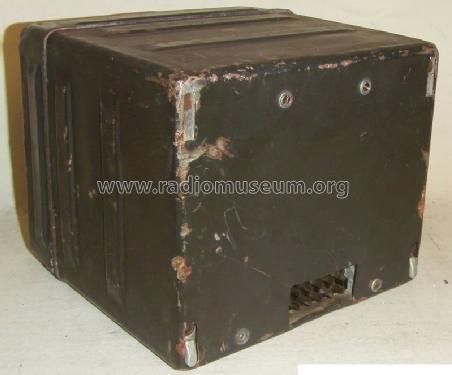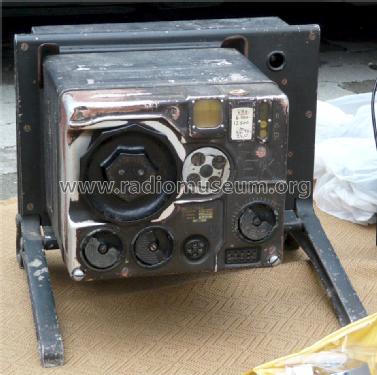EK (E10K) FuG10 - Gerät Nr. 124-108 xx - Anforder Z. Ln 26594
Militär (verschiedene Hersteller gleicher Modelle)
- Paese
- Germania
- Produttore / Marca
- Militär (verschiedene Hersteller gleicher Modelle)
- Anno
- 1939–1945
- Categoria
- Ricevitore militare
- Radiomuseum.org ID
- 77304
-
- alternative name: WEHRMACHT
Clicca sulla miniatura dello schema per richiederlo come documento gratuito.
- Numero di tubi
- 8
- Principio generale
- Supereterodina con stadio RF; ZF/IF 1460 kHz; 1 Stadi BF
- Gamme d'onda
- Onde corte (solamente OC)
- Tensioni di funzionamento
- Batterie (di accumulatori e/o a secco) / 29 Volt
- Altoparlante
- - Per cuffie o amplificatori esterni
- Materiali
- Mobile di metallo
- Radiomuseum.org
- Modello: EK FuG10 - Gerät Nr. 124-108 xx - Anforder Z. Ln 26594 - Militär verschiedene
- Forma
- Chassis o in scatola da montaggio
- Dimensioni (LxAxP)
- 217 x 180 x 205 mm / 8.5 x 7.1 x 8.1 inch
- Annotazioni
- Wehrmachtgerät. A1/A3-Empfänger als Bestandteil der FUG10-Flugzeug-Bordanlage. Frequenzbereich 3 - 6 MHz. Entwickelt von Lorenz. Anforderungszeichen Ln 26 594
- Peso netto
- 7.6 kg / 16 lb 11.8 oz (16.74 lb)
- Fonte dei dati
- Radiokatalog Band 2, Ernst Erb
- Bibliografia
- Bordfunkgeräte - Vom Funkensender zum Bordradar (D: Heinz Sarkowski: Berühmte Bordfunkgeräte)
- Letteratura / Schemi (1)
- D. (Luft) T. 4005/2 Fl.-Bordfunkgerät FuG X
- Autore
- Modello inviato da un iscritto da D. Utilizzare "Proponi modifica" per inviare ulteriori dati.
- Altri modelli
-
In questo link sono elencati 206 modelli, di cui 162 con immagini e 67 con schemi.
Elenco delle radio e altri apparecchi della Militär (verschiedene Hersteller gleicher Modelle)
Collezioni
Il modello EK (E10K) fa parte delle collezioni dei seguenti membri.
Discussioni nel forum su questo modello: Militär verschiedene: EK FuG10 - Gerät Nr. 124-108 xx - Anforder Z. Ln 26594
Argomenti: 1 | Articoli: 2

The cover needed some refreshment. It had scratches, different perforations; some buckles and had been repainted at least two times with different colors.
My plan was to clear the buckles, remove all paint by abrasive bead blasting, spray-paint the surfaces and finally fill the character and sign impressions with appropriate paint.
The front and rear cover was in the production line pressure formed of 1,5 mm alumina plate and in the same process the grooves for character and signs were performed.

The front cover was dismounted. The original red first layer basic painting can be seen at left - it was hidden under more layer of paint.
The alumina data sign with its rivets was removed to protect it for the abrasive bead blasting.
Do not use sandblasting - it is too abrasive. Especially for the character/symbols impressions.
To protect the glass lens it was covered with a two tight fitting plastic caps. The red one mounted at the backside. Another will cover the front glass.
The missing cart holder right of the red lens cover had to be reconstructed later. See the four holes for rivets.

Hidden under the sign I found the original paint and two other layers.
The original shade of the paint was compared to a RAL Color Chart and saved.
The characters and symbols were pressed into the alumina surface in the production phase - you can recognize the white paint filled impressions. They were later filled up with - as here - white oil paint. The excess paint was whipped away with a soft paper immediately after the application.

The rear part of the cabinet. The four paper bits revealed some unreadable notes partially hidden under spray-paint.

The result immediately after the sandblasting. Observe the lens-protecting cap. The three metal rotation knobs were too treated. Provisory metal screws were inserted in the knobs. In this way they are easier to handle under the bead blasting and painting process.

The final result after a professional spray-painting with an RAL color similar to the original color. The paper holder right of the lens - with a little card placed - was reconstructed from a 0,5 mm alumina plate and mounted in epoxy-glue instead of the original rivets.
Behind the lens glass is engraved kPer/s shown instead of the normal kHz. As a Jew with the name Hertz the Nazis forbade his name to bee used - even abbreviated!
Bernhard Dahlin, 25.Nov.12


